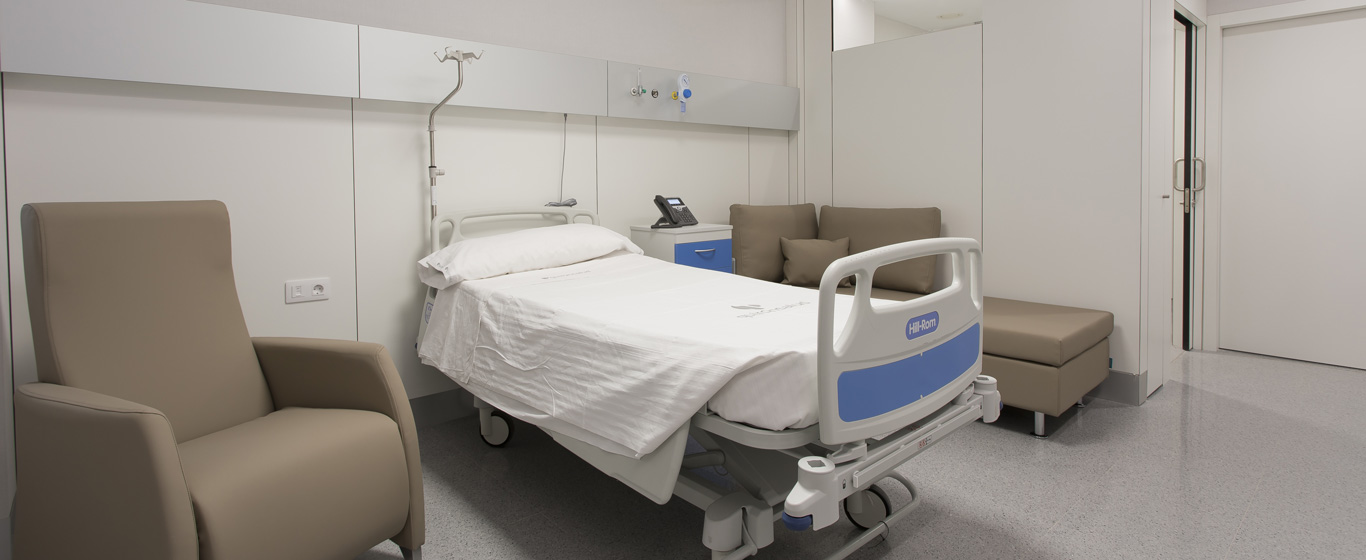X-ray of the Spine
A spinal X-ray is a diagnostic procedure that provides two-dimensional images of the spinal structures through the use of X-rays, a type of ionizing radiation. This technique allows visualization of both the vertebrae and intervertebral discs.

General Description
A spinal X-ray is a diagnostic procedure that uses ionizing radiation (X-rays) to obtain images of the spinal structures (vertebrae and intervertebral discs) and assess their condition and morphology.
The spine is divided into several sections, so different types of spinal X-rays exist depending on the area to be examined:
- Cervical spine X-ray: Examines the seven vertebrae of the neck.
- Thoracic or dorsal spine X-ray: Evaluates the 12 vertebrae in the thoracic region.
- Lumbosacral spine X-ray: Captures images of the five lumbar vertebrae and the five fused bones that form the sacrum.
- Sacrum/coccyx X-ray: Provides a detailed analysis of the sacrum and the four bones of the coccyx.
- Full spine X-ray (teleradiography): Captures images of the entire spinal column.
When X-rays are applied to the examined area, the radiation passes through body tissues and is absorbed by them. The denser the tissue, the more radiation it absorbs, and the brighter it appears in the image:
- Vertebrae, being bony structures, are very dense and appear almost white.
- Intervertebral discs are cartilaginous soft tissues that absorb less radiation and appear in shades of gray.
When Is It Indicated?
A spinal X-ray is used to identify and characterize any abnormalities or conditions affecting the spine, including:
- Abnormal curvature or alignment, such as scoliosis.
- Congenital disorders, such as spina bifida.
- Fractures or dislocations.
- Osteoarthritis.
- Osteoporosis.
- Bone spurs.
- Vertebral displacement (spondylolisthesis).
- Bone infections.
Therefore, a physician may order a spinal X-ray if the patient:
- Has suffered trauma, such as a fall or a blow.
- Experiences persistent pain, numbness, or weakness in the back or neck, which may radiate to the shoulders, arms, or legs.
- Feels stiffness or difficulty moving the neck or back.
- Has noticeable misalignment of the shoulders, back, or hips.
How Is It Performed?
Typically, at least two images are taken during a spinal X-ray: a frontal or anteroposterior view and a lateral or profile view. In some cases, an oblique view may also be required. The patient's position depends on the area of the spine being examined and the specific projection needed:
- Lying on the back for the anteroposterior projection of all spinal regions. For the lumbar, sacral, and coccygeal areas, the hips and knees must be flexed.
- Lying on the side with bent knees for the lateral projection of the thoracic and lumbar spine, sacrum, and coccyx.
- Sitting sideways for the lateral projection of the cervical spine.
- Lying on the back with the torso rotated about 45 degrees for an oblique lumbar view.
- Sitting with the neck rotated about 45 degrees for an oblique cervical view.
- Standing for a full spine X-ray.
In all cases, the patient is positioned between the X-ray emitting device and the receptor plate, which captures the absorbed radiation and converts it into images. Traditionally, photographic plates sensitive to radiation were used, but today, most systems are digital and use electronic sensors.
Risks
A spinal X-ray involves exposure to radiation, which slightly increases the possibility of cellular changes that could lead to cancer. However, the risk is very low since the radiation dose received during a spinal X-ray is limited. For example, a lumbar X-ray applies a dose of 1.5 mSv, comparable to the natural background radiation absorbed over six months. Therefore, it is not considered a dangerous test. Additionally, modern equipment uses controlled beams and filtering systems to minimize scattered radiation.
For pregnant women, however, the risk is higher since the fetus is more sensitive to radiation. In such cases, lead shields are used, or alternative diagnostic tests are considered.
What to Expect From a Spinal X-Ray
Before the procedure begins, the patient must remove any clothing covering the examined area, as well as any metallic objects. A medical gown may be provided. Once in the radiology room, the technician will instruct the patient on how to position themselves and will place a lead apron over the pelvic region to protect it from radiation.
The technician will remain in a separate room or behind a protective barrier while activating the X-ray machine. During imaging, the patient must remain completely still to ensure the clearest possible images. They will also need to hold their breath to prevent diaphragm and chest movement. Additionally, the technician may ask for changes in posture or movement, such as raising the arms, repositioning, or opening the mouth.
Each image takes only a few seconds. The total duration of the test depends on the number of images needed, but it usually does not exceed 15 minutes. The procedure is painless and does not cause any discomfort, aside from the possible inconvenience of maintaining a fixed position. It is an outpatient procedure requiring no aftercare, allowing the patient to resume their daily activities immediately afterward.
Specialties that Request a Spinal X-Ray
The medical specialties that most commonly request a spinal X-ray from the radiology department include primary care, emergency medicine, rheumatology, and orthopedic surgery.
How to prepare
Although a spinal X-ray does not require special preparation from the patient, it is recommended to wear comfortable clothing and remove any metal objects from the affected area, as metal is visible in the X-ray and may interfere with the diagnosis.






































































































